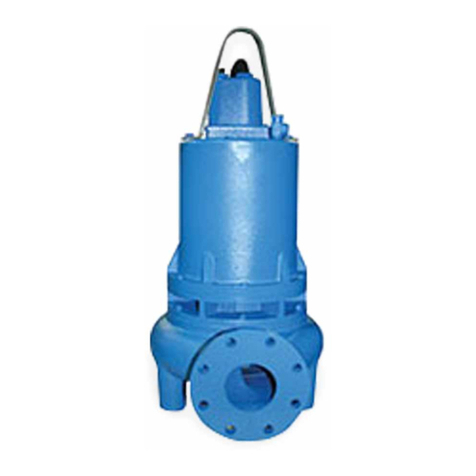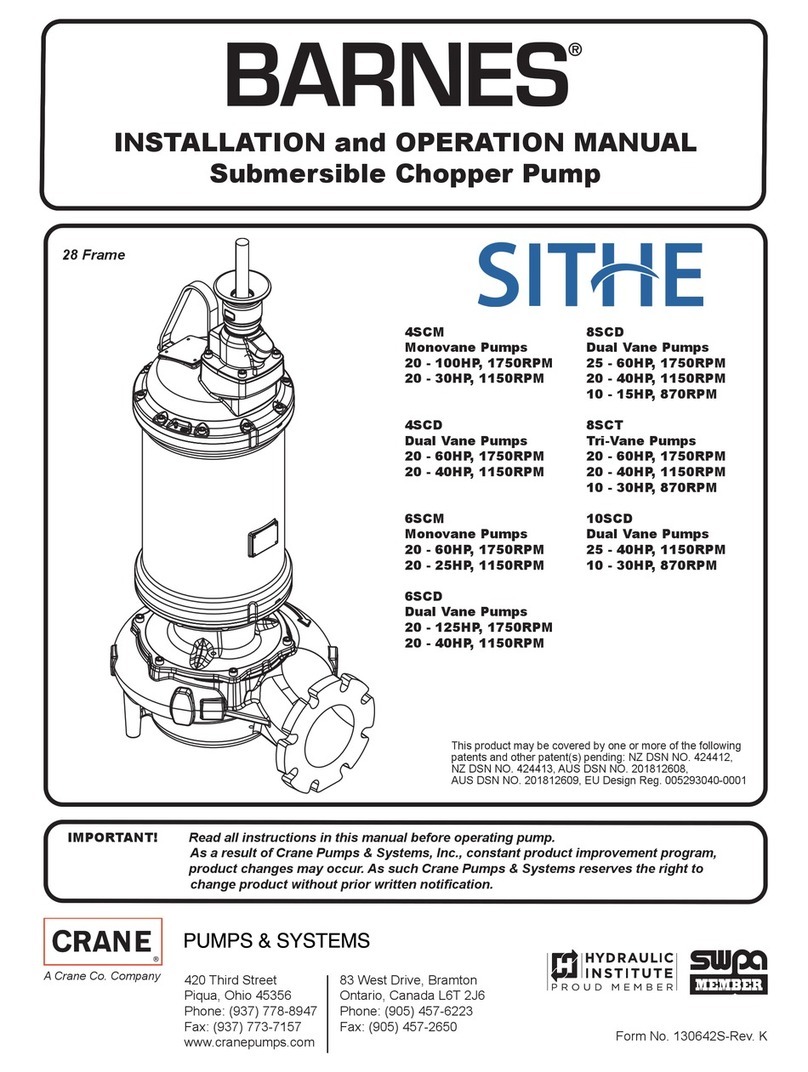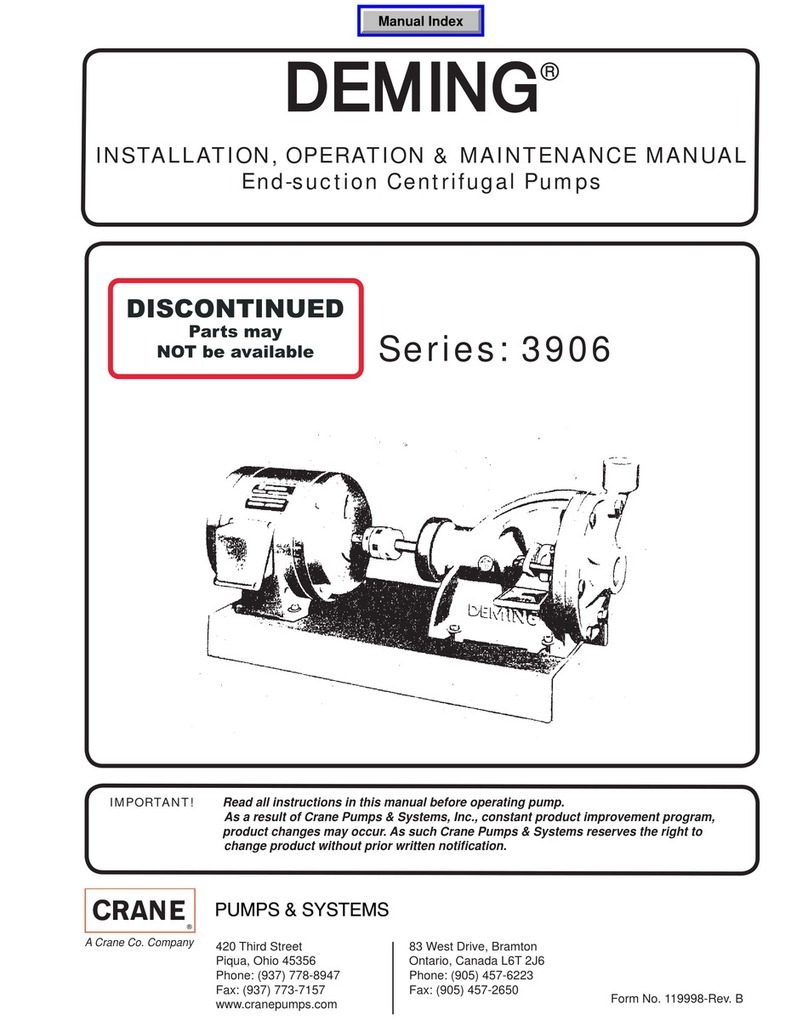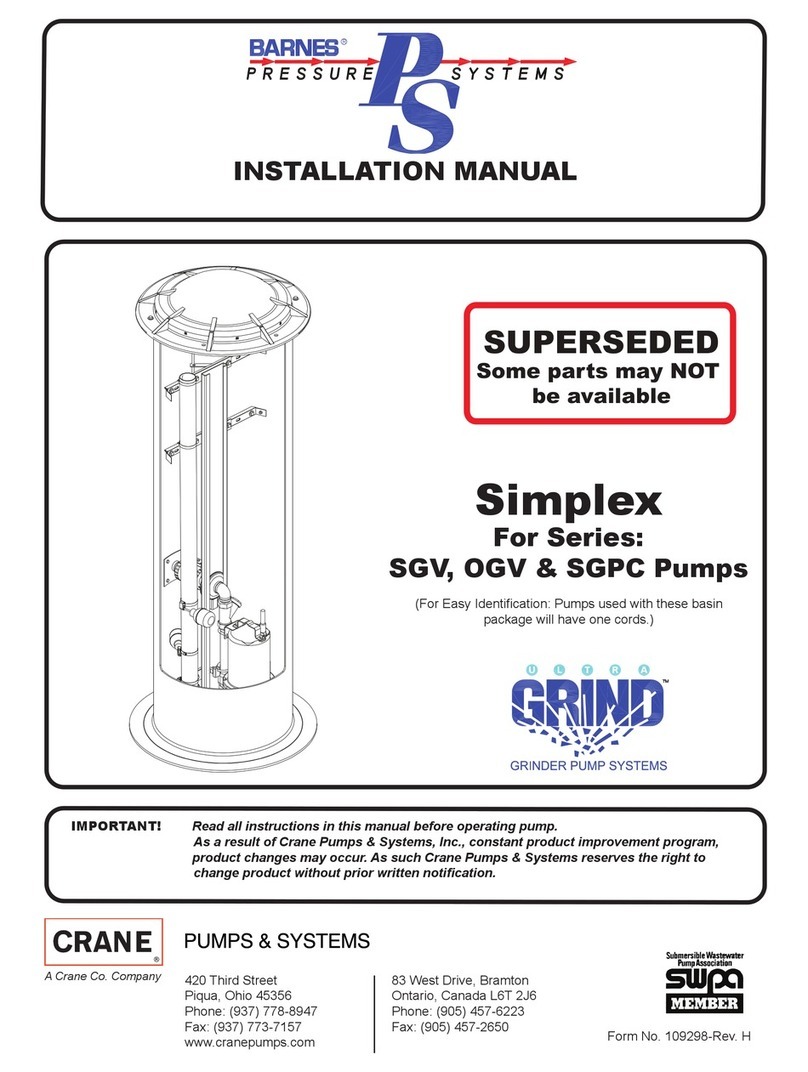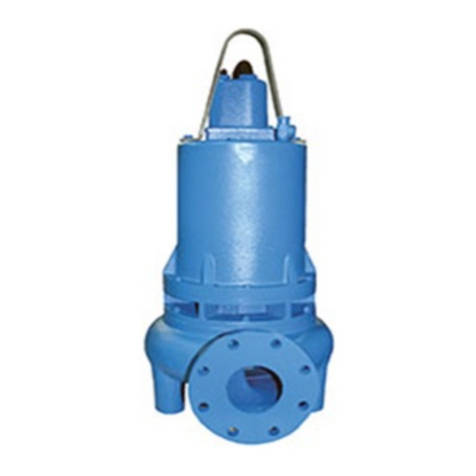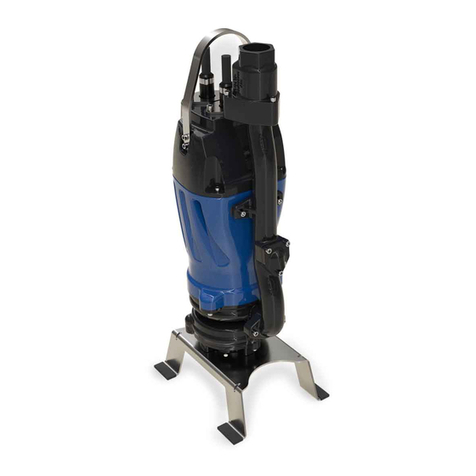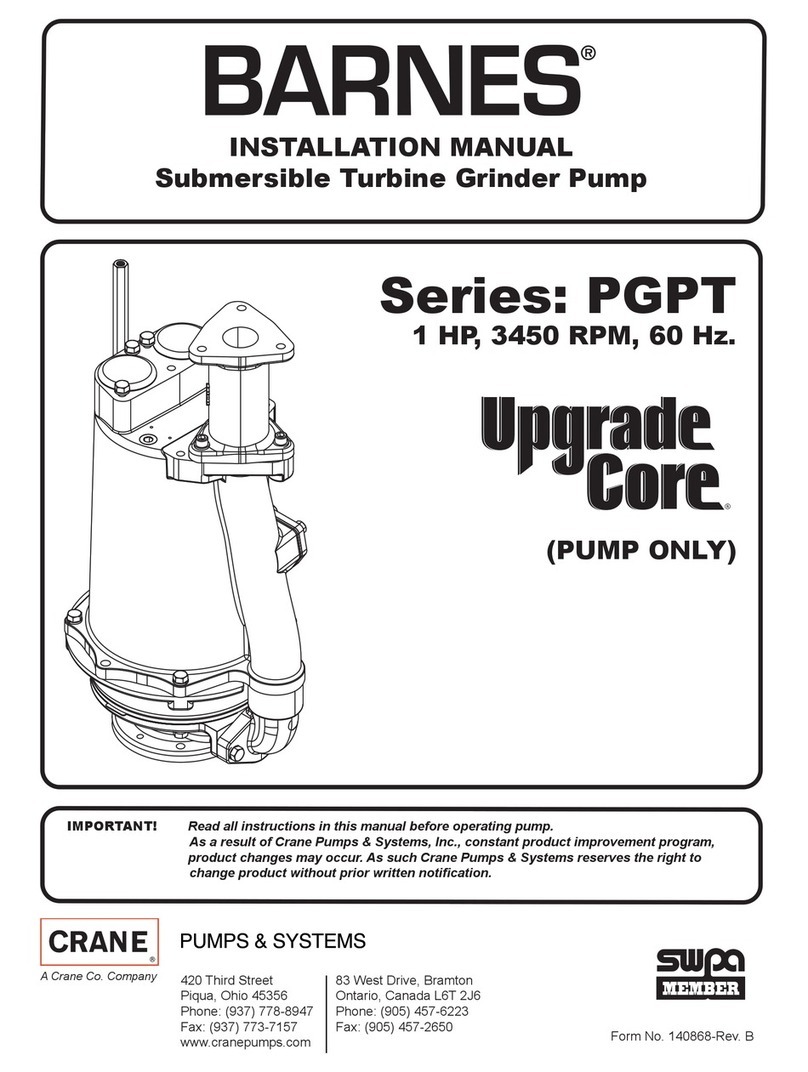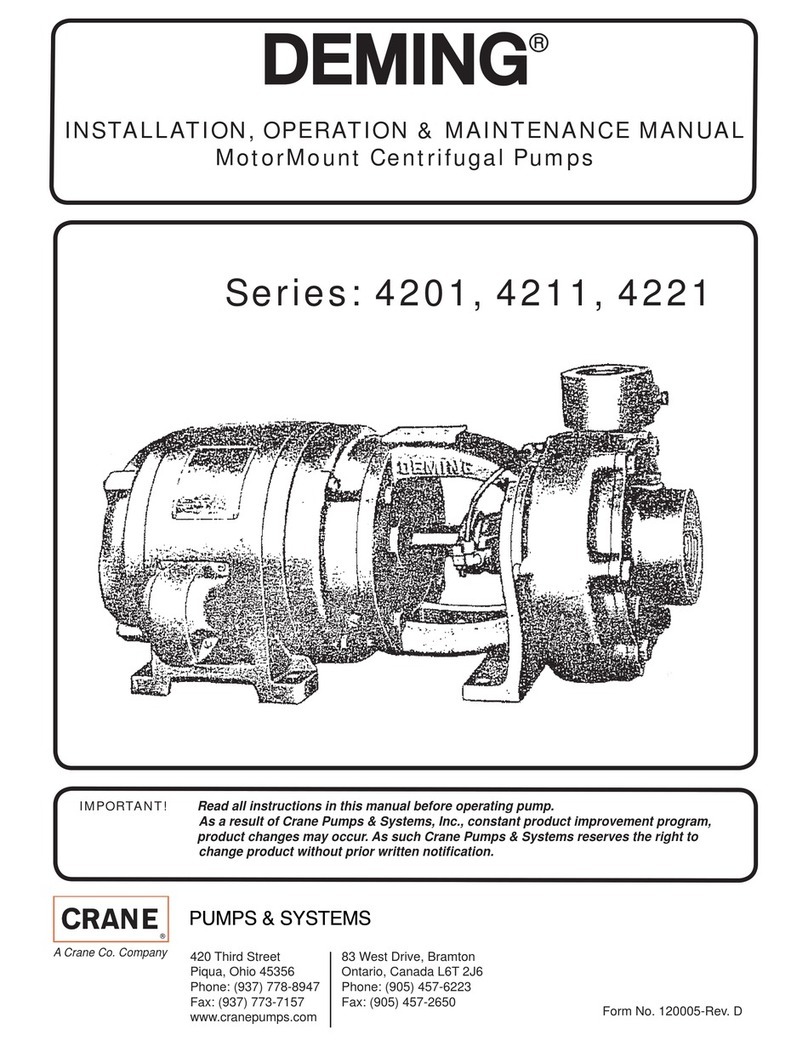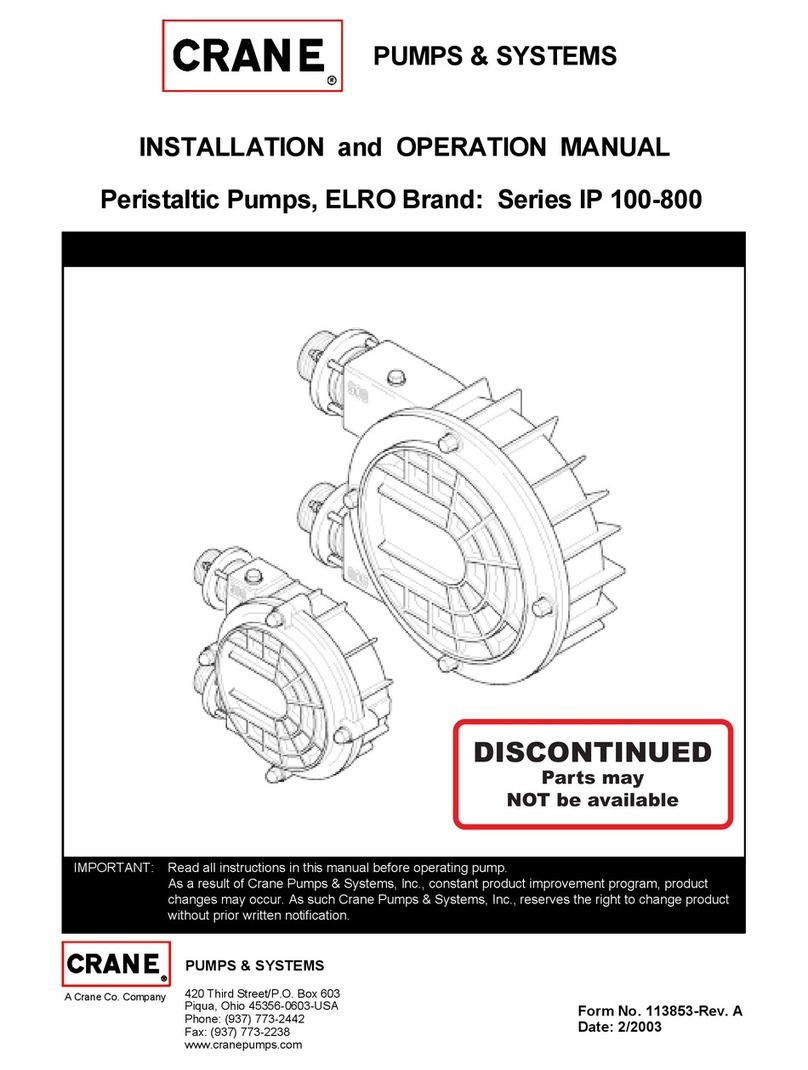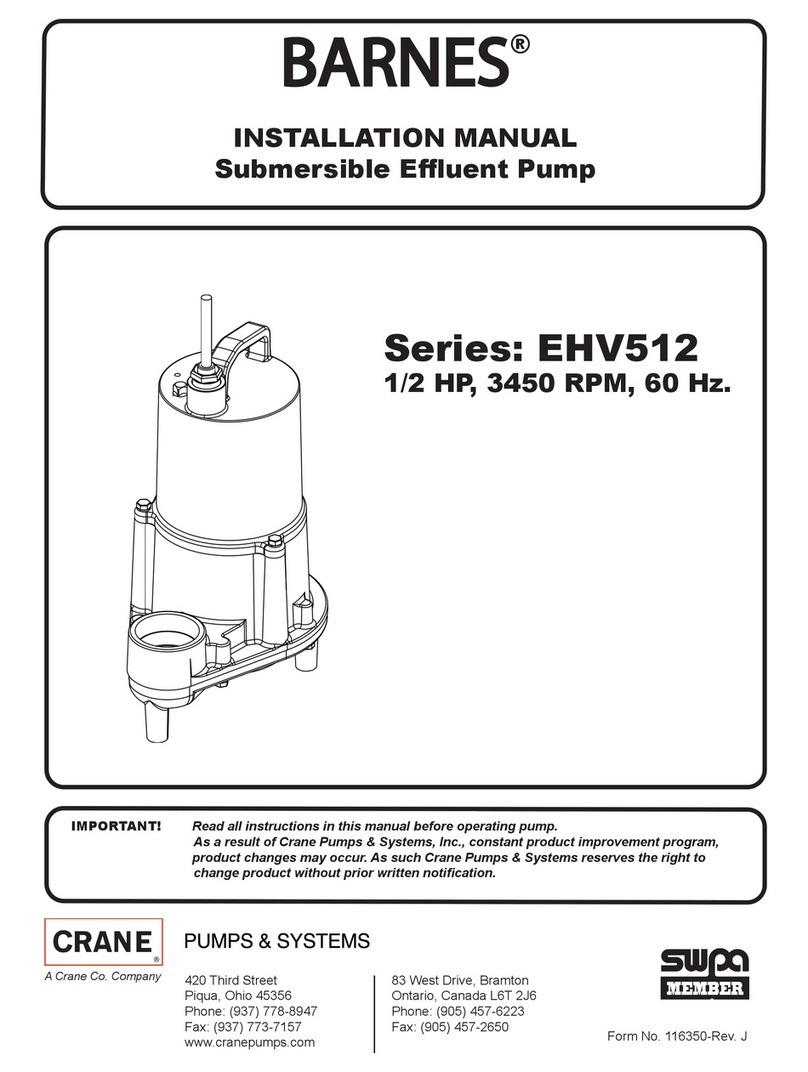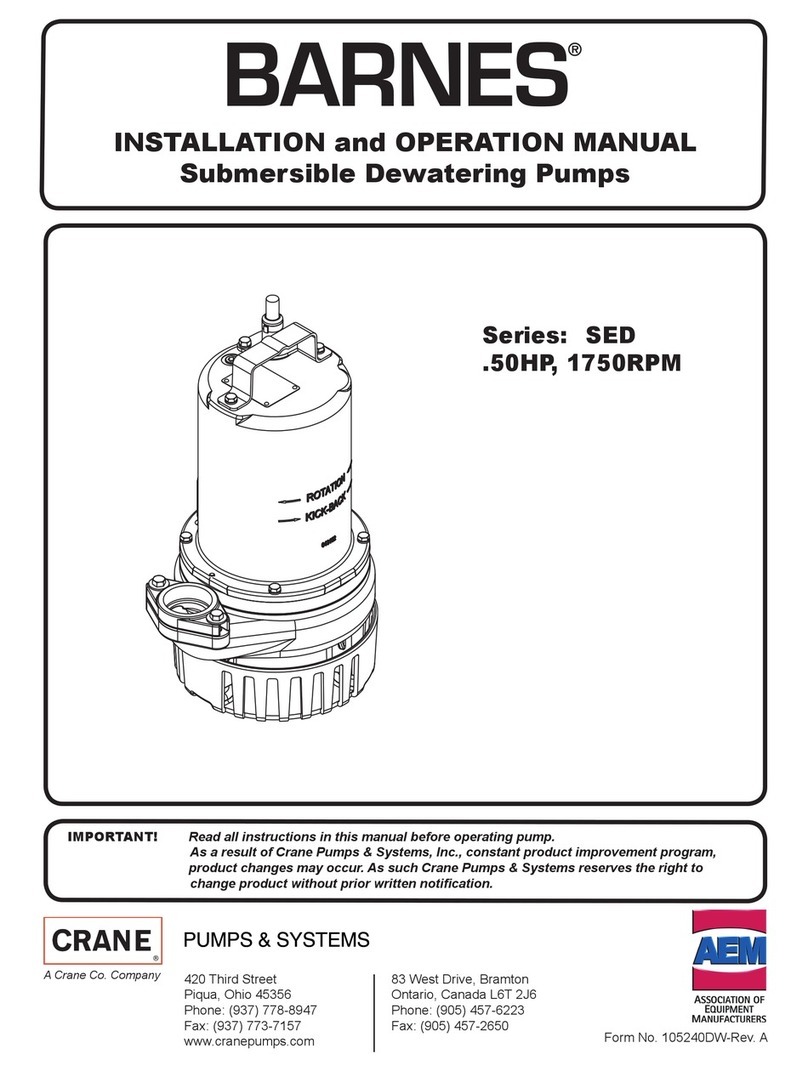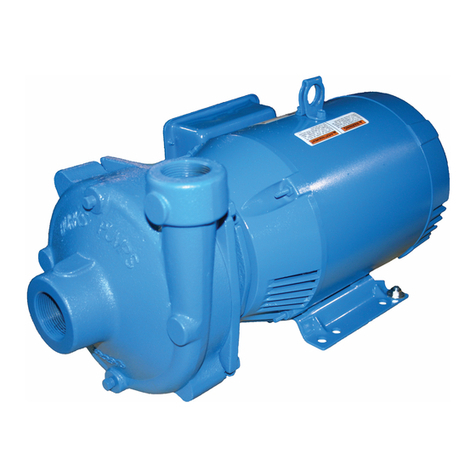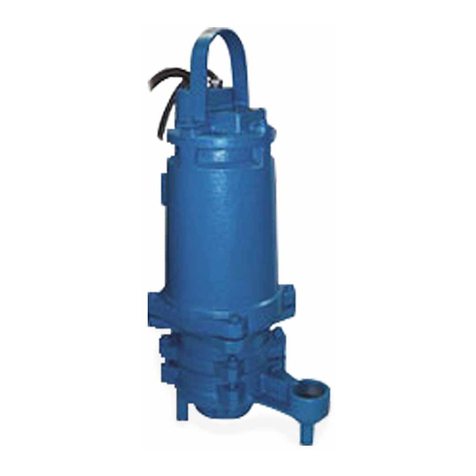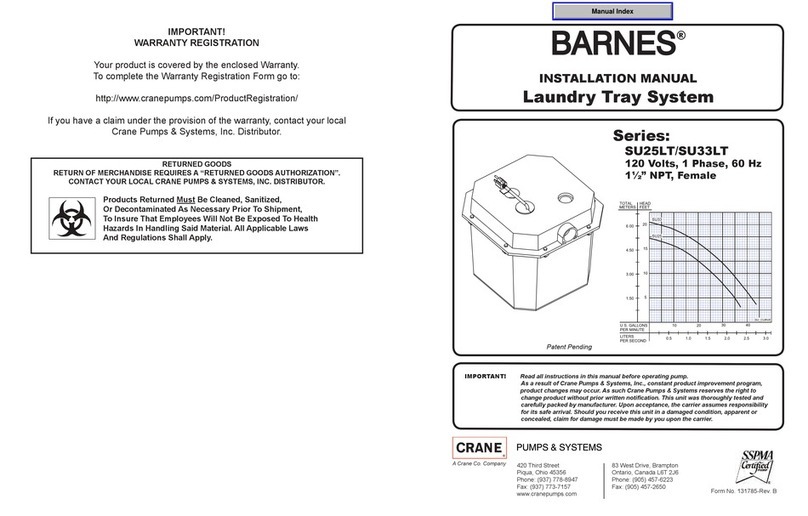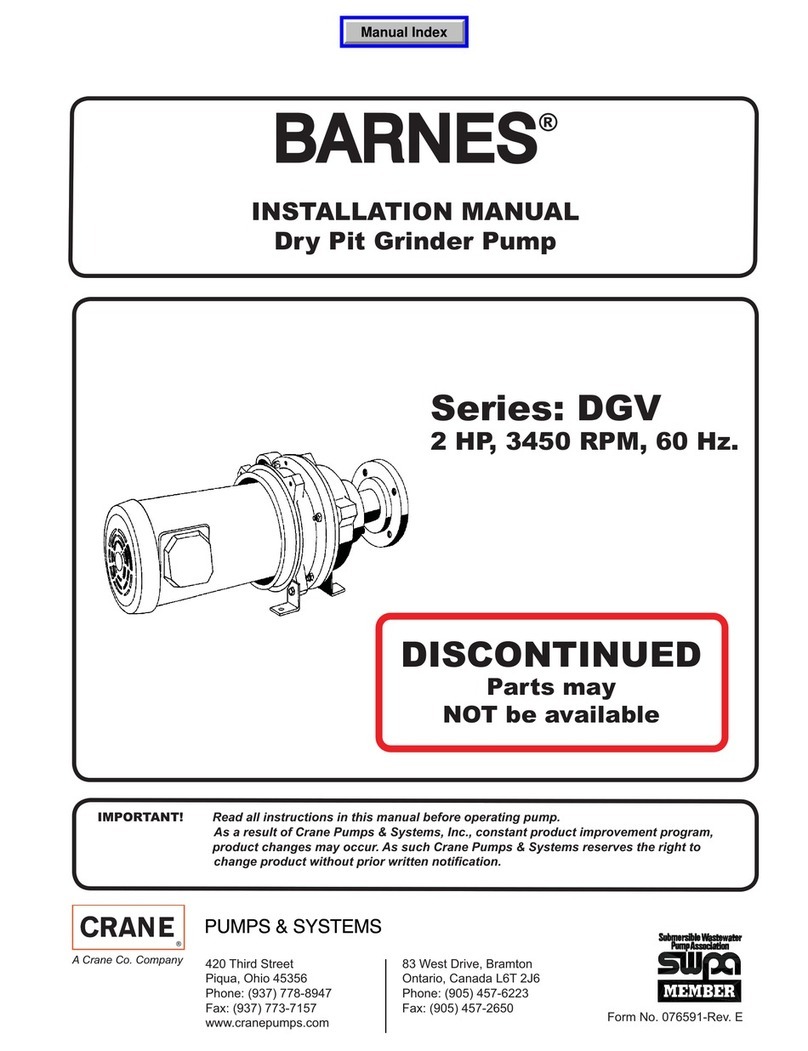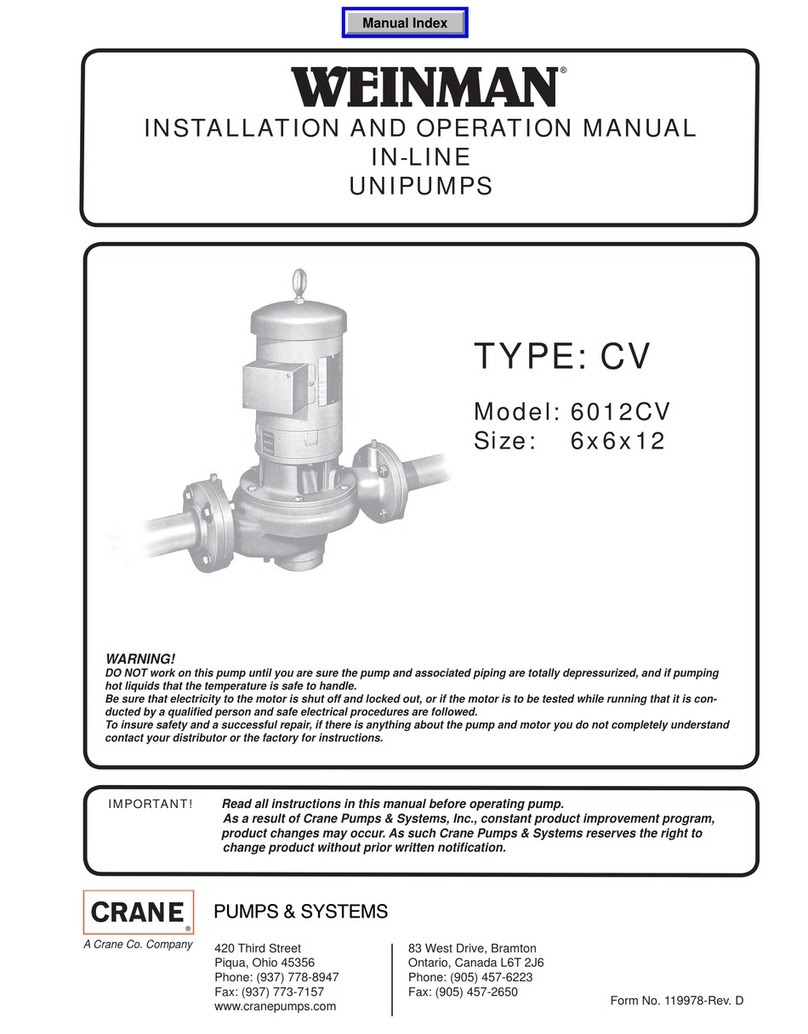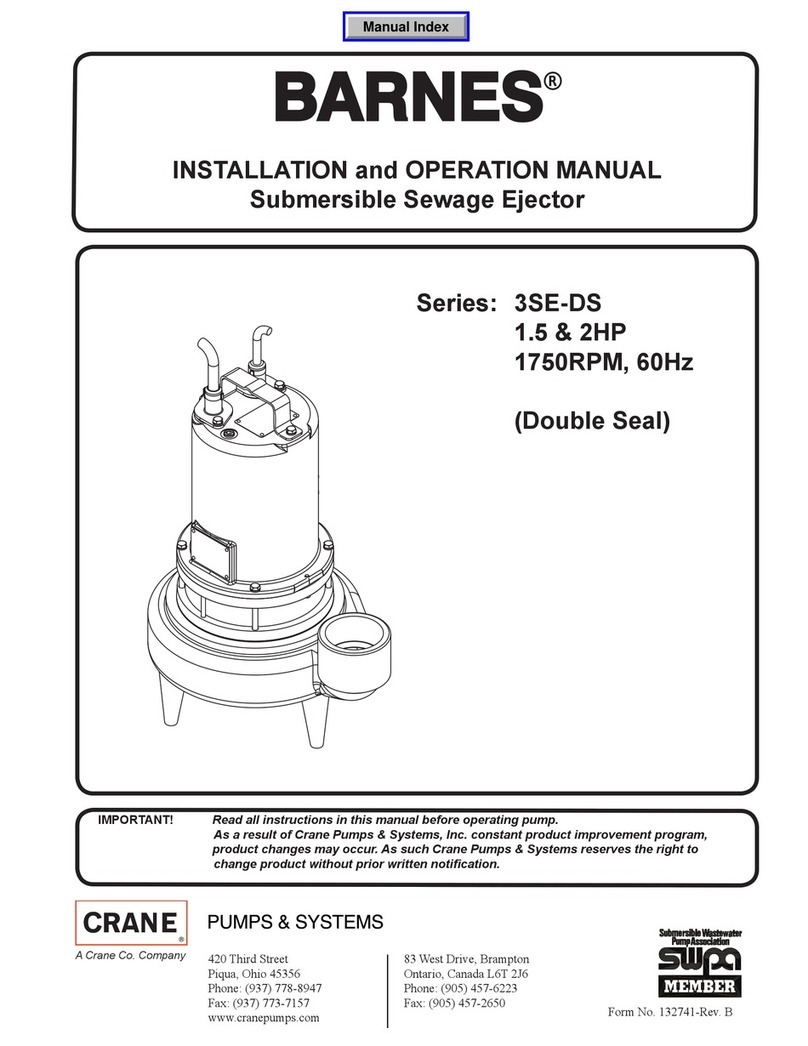
3
GENERAL INFORMATION
To The Purchaser:
Congratulations! You are the owner of one of the finest
pumps on the market today. These pumps are products
engineered and manufactured of high quality components.
With years of pump building experience along with a con-
tinuing quality assurance program combine to produce a
pump which will stand up to the toughest applications.
Check local codes and requirements before installation.
Servicing should be performed by knowledgeable pump
service contractors or authorized service stations.
Receiving:
Upon receiving the pump, it should be inspected for dam-
age or shortages. If damage has occurred, file a claim
immediately with the company that delivered the pump.
If the manual is removed from the crating, do not lose or
misplace.
Storage:
Short Term - Pumps are manufactured for efficient
performance following long inoperative periods in storage.
For best results, pumps can be retained in storage, as
factory assembled, in a dry atmosphere with constant
temperatures for up to six (6) months.
Long Term - Any length of time exceeding six (6) months,
but not more than twenty four (24) months. The units
should be stored in a temperature controlled area, a roofed
over walled enclosure that provides protection from the
elements (rain, snow, wind blown dust, etc..), and whose
temperature can be maintained between +40 deg. F and
+120 deg. F. Pump should be stored in its original shipping
container and before initial start up, rotate impeller by hand
to assure seal and impeller rotate freely.
Service Centers:
For the location of the nearest Weinman Service Center,
check your Weinman representative or Crane Pumps &
Systems, Inc., Service Department in Piqua, Ohio, telephone
(937) 778-8947 or Crane Pumps & Systems Canada, Inc.,
Bramton, Ontario, (905) 457-6223.
INSTALLATION
FOUNDATION
Weinman Motor-Mount Pumps can be installed on any
sufficientlysolidfoundationsincepumpand motor are rigidly
aligned. The unit may be installed on a concrete foundation
with anchor bolts set in place or securely mounted on a wall
in either a horizontal or vertical position with motor above
pump. The pump should be located as near the source
of supply as possible with a minimum of suction pipe and
elbows.
PIPING
A foot valve and strainer must be installed on the lower end
of the suction pipe to keep pump completely filled with liquid
whenthepump isusedunder suctionliftconditions.Connect
suction pipe to pump, making certain that all connections
are airtight. When a foot valve and a strainer are used, it is
necessary to install a check valve in the discharge line near
the pump to prevent possible casing damage due to line
shock or surge when the pump stops. A gate valve should
also be installed in the discharge line. Connect discharge
pipe to pump casing.
It is important that the suction and discharge pipes “line up”
naturally with the pump. Do not “pull” pipes into position
with flange bolts or fittings. Support pipes independently of
the pump to eliminate any strain on the pump. Turn shaft to
see that it rotates freely. If rotor binds, it indicates a strain on
the casing, which must be corrected before operating pump.
It may be necessary to shim motor at foundation to assist
piping connection line-up.
WIRING/ROTATION
Check motor name plate for electrical characteristics. Be
sure they are the same as the rating of the electric power
available. Connect power lines to motor in accordance with
the wiring diagram on the motor. Test rotation by jogging
motor. Shaft must rotate in the direction indicated by arrow
cast on pump casing.
OPERATION
PRIOR TO STARTING
Be sure the following important items are checked before
starting.
1. Pump and driver bolted securely.
2. Piping complete.
3. Motor properly lubricated. Follow the recommendations
found in the Maintenance Section of this manual.
4. Open the seal flush valve, if used.
5. Shaft turns freely.
6. Rotation is correct. The pump must rotate in the
direction of the arrow on the casing.
7. Discharge valve. A high or medium head centrifugal
pump operating at full speed with the discharge valve
closed, requires much less power than when operating
at its rated head and capacity with the discharge valve
open. For this reason, it is usually best to have the
discharge valve only partially open when starting the
pump.
WARNING !
Operating the pump with a closed or partially open
discharge valve can result in excessive heat buildup.
Such operation should be limited to the shortest
practical duration. Operating the pump at or near shut-
off head places greater loads on the shaft and motor
than operation at the designed flow rate and head,
8. Suction valve, if used, must be fully open. Do not use
suction valve as a throttling device
